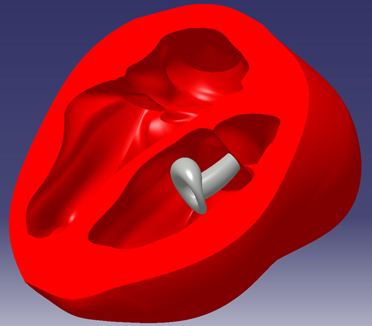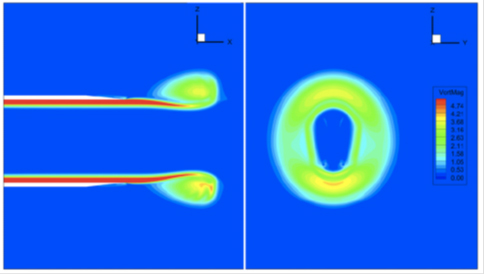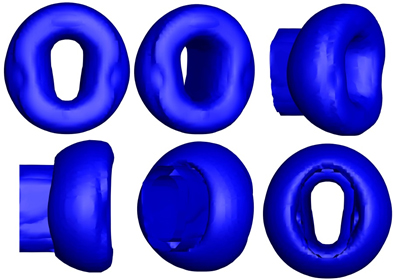Research Projects
Computational Fluid Dynamics
Computational Fluid Dynamics, CFD, is an advanced tool that has assisted many disciplines. It provides valuable information that current experimental tools cannot deliver. Using CFD to study the blood flow assists in better understanding the cardiovascular system, designs of cardiovascular devices, and diagnostics of cardiovascular diseases. As another application of CFD, in KLAB, we use CFD to validate fluid dynamics indices such as the one we first developed for quantifying the axisymmetry of 3D vortex rings.

Schematic of the vortex formation process during early diastole in a reconstructed LV chamber: Initial vortex roll-up during the opening of the mitral valve shows diastolic vortex formation; as the vortex is still growing while yet connected to the transmitral jet. The image is from here.
There are many conditions in which a vortex ring deviates from axisymmetry. The shape of a three dimensional vortex ring represents the axisymmetry of propulsion, which has applications in animal locomotion (e.g., the free-swimming of a jellyfish), rocket and marine propulsion devices as well as blood flow through the heart valves. No fluid dynamics' measure -other than the one we recently introduced-is yet defined to quantify the axisymmetry of a three dimensional vortex ring with a single value. The non-axisymmetry exists, for instance, in the vortex ring formed downstream of the mitral valve of healthy hearts, and helps efficient blood momentum transfer from the left atrium toward the aorta. In KLAB, we have introduced an index that measures the deviation of a vortex ring from axisymmetry. This index examines the spectrum of the impulse of a naturally-formed vortex ring and expresses the deviation from axisymmetry in terms of the vortex's impulse. We show that the axisymmetry index is related to the second moment of the vorticity distribution of the ring, i.e., as the second moment of vorticity on one side increases compared to the other side, the axisymmetry index decreases accordingly.

The vorticity distribution of a 3D non-axisymmetric vortex in two planes.
The axisymmetry index was validated in several cases including a CFD case where a vortex ring was numerically generated in a piston cylinder mechanism whose nozzle was in the shape of an oval. This created a vortex ring which is not axisymmetry. The developed axisymmetry index successfully measured the deviation of the non-axisymmetric vortex ring. More information about this study can be found in here.

Isosurfaces of vorticity magnitude, w = 2.22 s-1 for the CFD case at non-dimensional time L/De = 2.51. Six different views of the same vortex ring are shown for better illustration of the ring's non-axisymmetry.
